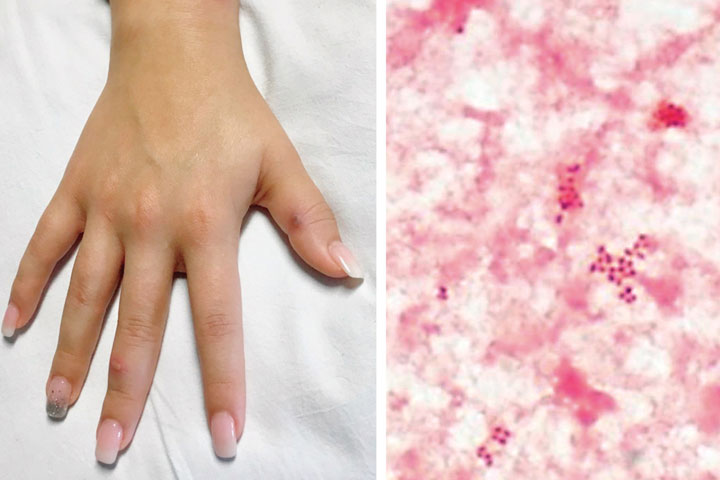A 20-year-old woman in the U.S. visited the emergency room after developing a rash all over her hands, arms, legs, trunk, and scalp.

It turned out that the cause was gonorrhea.
The young woman had had unprotected sex with a new partner two weeks before, and in the meantime, had developed muscle aches, fever, and pain in both ankles, as well as the rash, according to a case report in the New England Journal of Medicine.
The doctors examined her and found pustules on her skin, and swelling and pain in her right ankle. Suspecting gonorrhea, they started her on antibiotics and confirmed the diagnosis with a blood test.
The antibiotics worked to relieve her symptoms, and at a follow-up appointment three months later, she was fine.
This particular kind of gonorrhea, a “disseminated gonococcal infection,” isn’t that uncommon, according to Dr. Ameeta Singh, a clinical professor in the division of infectious diseases at the University of Alberta.
Up to three per cent of gonorrhea cases present this way, she said, and she’s seeing these severe cases more often lately simply because the overall number of gonorrhea cases in Canada is rising. According to the Public Health Agency of Canada, gonorrhea infections rose 65 per cent between 2010 and 2015.
In most cases, said Singh, people with gonorrhea infection — especially men — might get discharge or burning with urination. Many women might confuse mild symptoms with a bladder or vaginal infection, according to PHAC.

Get weekly health news
“A significant proportion of people will have no symptoms at all. So they can carry the infection and not know it,” Singh said.
Left untreated, the infection can cause pain in the pelvis or testicles, complications with pregnancy and occasionally infertility.
And gonorrhea can present in places other than the genitals. “Depending on the type of sex, they can also get infections in the throat as well as in the rectum,” Singh said.
A gonorrhea infection in the throat might be hard to spot, she said.
“It would be just like a regular sore throat that you would get with other viruses or other bacteria like strep infections.” But if it’s not responding to treatment, Singh encourages doctors to test for gonorrhea.
“We can also see infections occurring in the eye,” she said. “So the eye becoming pink or red and also with discharge. So it can look basically like pink eye, but much worse.”
WATCH: Alberta’s rates of gonorrhea and syphilis are on the rise

In this young woman’s case, the infection entered the bloodstream. Her ankles likely hurt because, Singh said, “It seems to like the joints and so sometimes you can get septic arthritis which is actually an infection of the joint itself.”
Despite having lesions on her hand, Singh thinks it’s unlikely that the woman would be able to transmit gonorrhea through skin-to-skin contact. “The lesions themselves are not infectious. They would have to have sex with somebody who was infected.”
Luckily, she said, if someone went to the doctor complaining of fever, a rash and joint pain, doctors would likely order a blood test, which would quickly pick up a gonorrhea infection. Although gonorrhea is increasingly becoming resistant to common antibiotics, she said, it’s still treatable.
Bottom line though, she said, it’s best to prevent the infection in the first place by practicing safer sex, like using a condom, reducing the number of sexual partners you have, and getting tested for STIs.



Comments